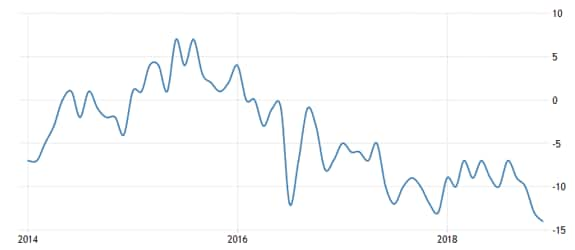


Highlights: - Theresa May’s Brexit deal defeated by a wide margin; No-confidence motion introduced - Opens up other options to deal with Brexit - Elevated political uncertainty to seed asset class volatility -------------------------------------------------
As anticipated, Theresa May’s Brexit deal proposal was defeated in the UK Parliament, which voted it out by an unexpected margin – 202 in favour versus 432 against. While UK assets classes have positively reacted, the vote fall-out leads to an elevated political uncertainty. Leader of Opposition Jeremy Corbyn has moved a motion for no-confidence, which would be debated on January 16.
Recent survey results points towards higher chance of a no-deal Brexit scenario. However, there is no option where there appears to be majority consensus building up.
YouGov survey results  Source: YouGov
Source: YouGov
Medium term implication echoes Bank of England’s economic assessment, wherein Brexit uncertainties dampen UK's near term growth outlook.
UK Consumer Confidence  Source: tradingeconomics.com
Source: tradingeconomics.com
Industrial production in the UK (%)  Source: Office of National Statistics, tradingeconomics.com
Source: Office of National Statistics, tradingeconomics.com
The deal that was put to vote After series of negotiations, since June 2016, EU and UK have agreed on rights of European Union and British citizens in both territories, UK’s financial contributions for its past commitments to the EU (39 billion pounds) and ways and means to deal with the Irish border.
The deal, practically, left open contours of the trading relation between the UK and EU. However, the deal involves a 21-month transition period before the final exit in 2020 during which trade relationship would be figured out.
Contentious issue: Irish backstop The Brexit deal includes an agreement (termed backstop) over the Irish border (border which separates Northern Ireland and the Republic of Ireland). Backstop is a 'what if' option, wherein an open border is maintained on the island of Ireland if the Brexit happens without an all-encompassing trade deal. The idea is to keep Northern Ireland (part of UK) under the EU customs union to prevent a hard border within the Island of Ireland. This has been necessitated by the UK’s commitments made to Northern Ireland in the late 90s (Good Friday agreement).
Now, this arrangement is fiercely debated as a possible different customs regime for Northern Ireland and Britain questions the sovereignty of UK. The other option is that Britain remains under the EU customs union, but that would be more onerous as UK would have difficulty in striking trade deals with other nations.
Post-Brexit map 
Options before Parliament Broadly, few scenarios are possible. While in normal course the PM has three days to come back with an alternate plan, a no-confidence motion changes the sequence. If the motion is passed, a new government will have to be formed within 14 days, otherwise a general election will be scheduled.
In either of the case, the new regime would engage with EU for a new deal. As of now, EU is not in favour of any major changes to the exiting plan and may only facilitate more clarifications.
Options on the table after Theresa May 
Source: Moneycontrol Research
A second referendum is also seen as a remote possibility, wherein UK citizens can have another chance to decide on Brexit. While these options are possible, it would require extension of the deadline under Article 50. However, EU would be wary about complications around the upcoming elections for the EU Parliament in May.
Scenario with most negative outcome: A no-deal Brexit A no-deal Brexit scenario means there is no agreement between the UK and EU on account of a logjam between different parties in the UK. A stalemate of this order means UK would leave the EU immediately on March 29 with no transition period available.
May be/may be not The UK is currently grappling with a full range of options on a political regime and Brexit. It remains to be seen whether the next few days would bring in dénouement of Brexit process or start of another long political discourse. The silver lining from Theresa May’s defeat is that options like second referendum or UK effectively cancelling Brexit (reversing Article 50) is also alive. But so is the possibility of total stalemate and hence a no-deal Brexit. This means, in due course, asset class volatility would remain elevated and uncertainty remains for corporates waiting for an appropriate time to investment.
From India’s perspective, companies from IT, automobiles, textiles, gems and jewellery, metals and mining sectors having business interest in the UK need to be watchful about a possible sharp move in the pound versus the dollar in coming days. And hence, it makes sense to keep exposure to the pound hedged or limit exposure to the UK asset classes.
Follow @anubhavsaysDiscover the latest Business News, Sensex, and Nifty updates. Obtain Personal Finance insights, tax queries, and expert opinions on Moneycontrol or download the Moneycontrol App to stay updated!